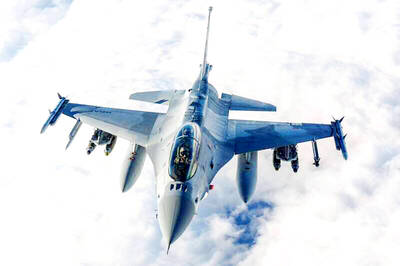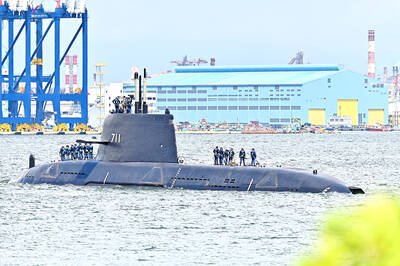Emerald rice paddies once stretched for kilometer upon kilometer alongside the road that winds through scenic Ubud on Indonesia's Bali Island, but today just glimpses remain as hotels, restaurants and shops have risen up to block the view.
Experts warn the very existence of the famed paddies on this island paradise is under threat as tourism-triggered development eats away at the irrigation systems that have nourished them for centuries.
Now farmers and hoteliers are forging an unlikely alliance to preserve the lifelines that feed Bali's lush carpets that are one of the island's major tourist attractions.
The task is pressing.
Bali's rapid construction is starting to damage the fields themselves, said Wayan Kantor, head of one of Bali's more than 1,200 subak, centuries-old networks that oversee Bali's irrigation systems,
"There are some places around Ubud where planting rice is impossible because access to water irrigation has been blocked by buildings," he said.
Wayan Windia, a researcher from Udayana University, said statistics on the issue are thin, but farmers' complaints are on the rise: "The problem is more severe around cities ... There have also been cases in Ubud."
The subak use water supplied by the island's four mountain lakes and its crisscrossing rivers in a system that intertwines rich Hindu cultural traditions with modern technical developments to guarantee all members adequate water supplies.
"Irrigation systems were the blood vessels of traditional Balinese culture and economy," anthropologist Putu Suasta said.
"But that was in the old days. The modern blood vessels of the Balinese economy now are the networks of road and modern transportation, centered around the airport," he said.
Farmers are under pressure from hotels and foreigners seduced by Bali's beauty to sell off or lease their paddy -- a move that earns them far more cash than they can make tilling the land themselves.
Villager Gusti Pageh, for instance, is considering leasing his 5,000m2 of land.
"You can make one million rupiah [about US$100] per year for [100m2] of land, just by leasing it to the rich," he enthuses. "And that's easy money, without risk."
In lush Ubud and its surrounds, 100m2 of cultivated paddy can earn a farmer 80,000 rupiah per season, or triple that per year. But normally, complained farmer Gusti Ngurah Jelantik, one good season is chased by two bad.
"During a bad season, we make only 50,000 or even 35,000 rupiah per [100m2]. Being a farmer is the poorest profession," he sighs.
Luh Sari, 45, leases her land to a family from the capital Jakarta.
"The most important thing is that I can earn money from the land," Sari said, adding that her husband also works as a gardener for their tenants, earning a bonus 600,000 rupiah per month.
It's outsiders such as those from Jakarta, the subak's Kantor said, who are not aware of Bali's complex ecological systems and tend not to think about how their construction might impact on their neighbors.
"When one buys a piece of land, they often don't see the small irrigation channel running next to it. They don't realize that if they fill it, the farmers downstream will have no access to the water," Kantor said.
In a bid to highlight the issue, some subak are now inviting the outsiders to join them, he said. Traditionally, only Hindus, who are a majority on the island of Bali -- unlike the rest of mostly-Muslim Indonesia -- were members.
Twenty-four out of 177 members are now such "housing" members.
"One day, maybe, all these places will be full of buildings, but the subak system will still be preserved by building owners. I hope it will be likes that, because we have to thank the gods for the water given to us," Kantor said.

LONG FLIGHT: The jets would be flown by US pilots, with Taiwanese copilots in the two-seat F-16D variant to help familiarize them with the aircraft, the source said The US is expected to fly 10 Lockheed Martin F-16C/D Block 70/72 jets to Taiwan over the coming months to fulfill a long-awaited order of 66 aircraft, a defense official said yesterday. Word that the first batch of the jets would be delivered soon was welcome news to Taiwan, which has become concerned about delays in the delivery of US arms amid rising military tensions with China. Speaking on condition of anonymity, the official said the initial tranche of the nation’s F-16s are rolling off assembly lines in the US and would be flown under their own power to Taiwan by way

OBJECTS AT SEA: Satellites with synthetic-aperture radar could aid in the detection of small Chinese boats attempting to illegally enter Taiwan, the space agency head said Taiwan aims to send the nation’s first low Earth orbit (LEO) satellite into space in 2027, while the first Formosat-8 and Formosat-9 spacecraft are to be launched in October and 2028 respectively, the National Science and Technology Council said yesterday. The council laid out its space development plan in a report reviewed by members of the legislature’s Education and Culture Committee. Six LEO satellites would be produced in the initial phase, with the first one, the B5G-1A, scheduled to be launched in 2027, the council said in the report. Regarding the second satellite, the B5G-1B, the government plans to work with private contractors

‘NARWHAL’: The indigenous submarine completed its harbor acceptance test recently and is now under heavy guard as it undergoes tests in open waters, a source said The Hai Kun (海鯤), the nation’s first indigenous defense submarine, yesterday began sea trials, sailing out of the Port of Kaohsiung, a military source said. Also known as the “Narwhal,” the vessel departed from CSBC Corp, Taiwan’s (台灣國際造船) shipyard at about 8am, where it had been docked. More than 10 technicians and military personnel were on deck, with several others standing atop the sail. After recently completing its harbor acceptance test, the vessel has started a series of sea-based trials, including tests of its propulsion and navigational systems, while partially surfaced, the source said. The Hai Kun underwent tests in the port from

MISSION: The Indo-Pacific region is ‘the priority theater,’ where the task of deterrence extends across the entire region, including Taiwan, the US Pacific Fleet commander said The US Navy’s “mission of deterrence” in the Indo-Pacific theater applies to Taiwan, Pacific Fleet Commander Admiral Stephen Koehler told the South China Sea Conference on Tuesday. The conference, organized by the Center for Strategic and International Studies (CSIS), is an international platform for senior officials and experts from countries with security interests in the region. “The Pacific Fleet’s mission is to deter aggression across the Western Pacific, together with our allies and partners, and to prevail in combat if necessary, Koehler said in the event’s keynote speech. “That mission of deterrence applies regionwide — including the South China Sea and Taiwan,” he